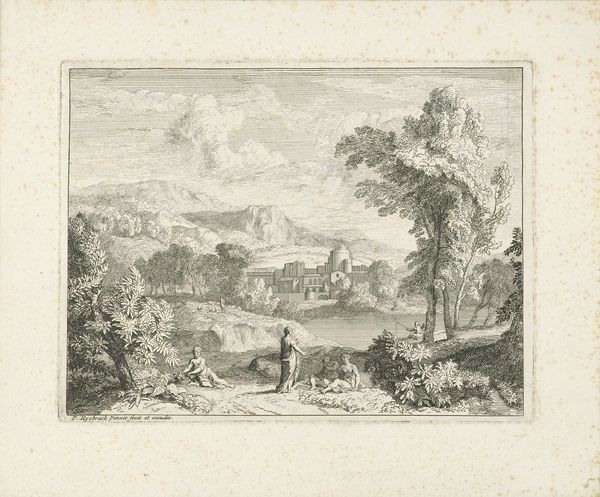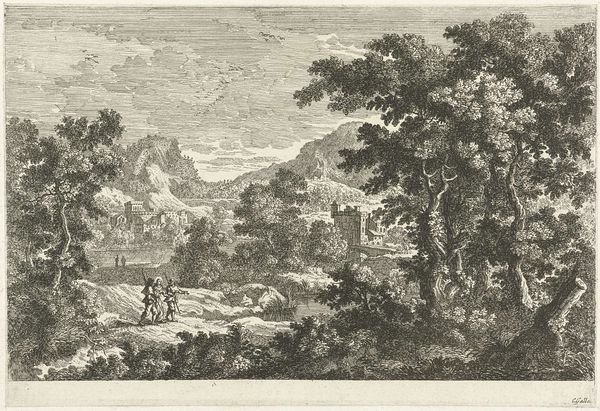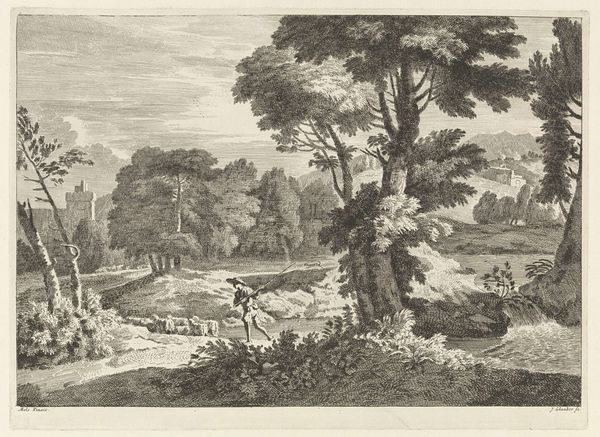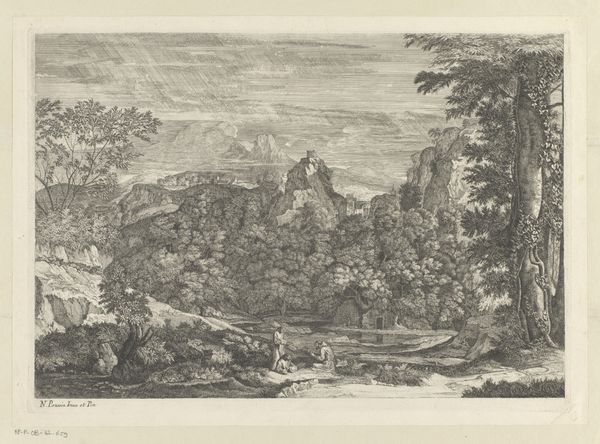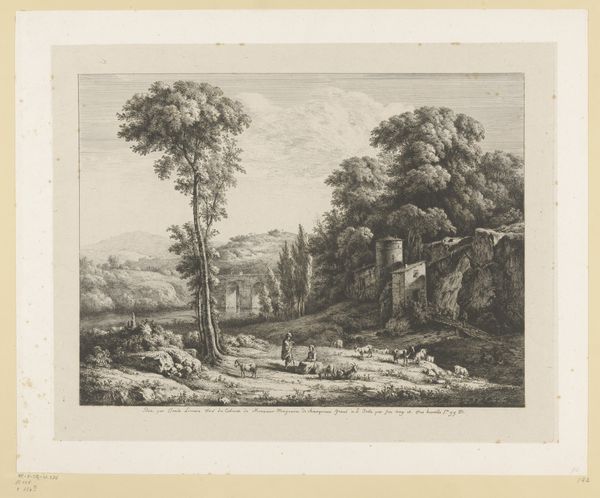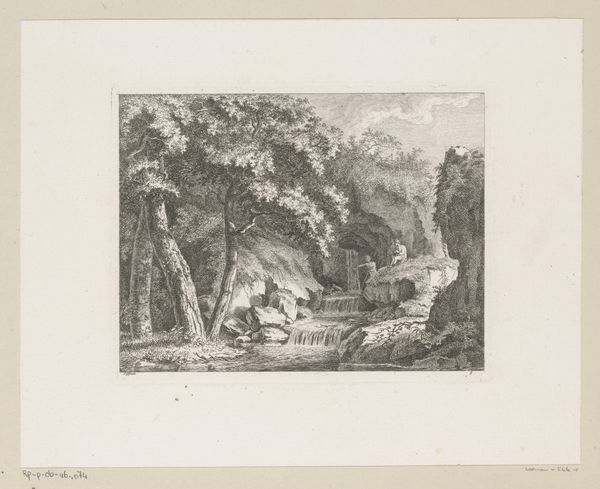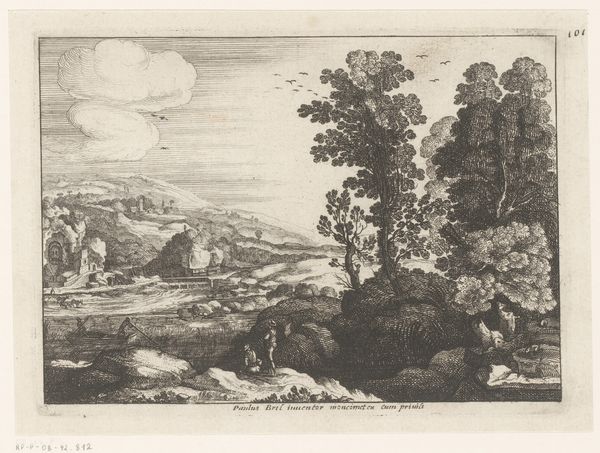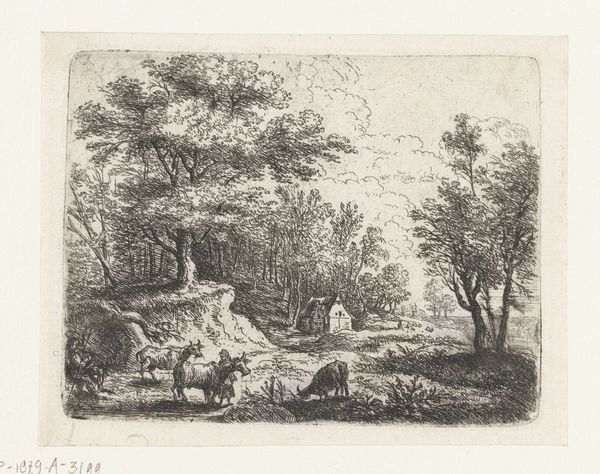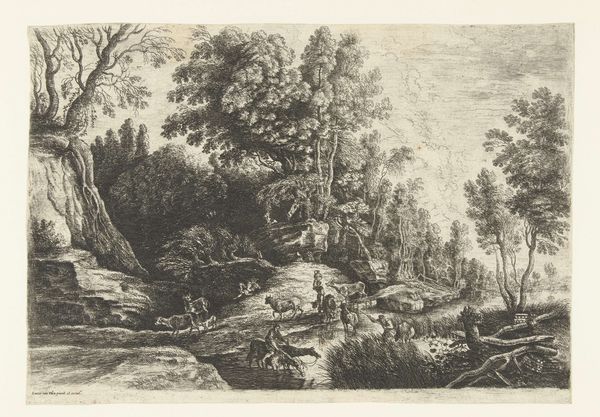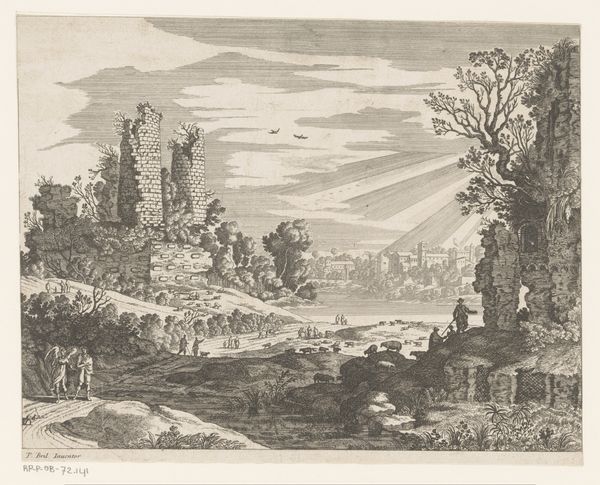
#
pencil drawn
#
light pencil work
#
pen sketch
#
pencil sketch
#
old engraving style
#
ink drawing experimentation
#
pen-ink sketch
#
mountain
#
pen work
#
sketchbook drawing
#
pencil work
Dimensions: width 364 mm, height 240 mm
Copyright: Rijks Museum: Open Domain
Johannes Glauber etched this Arcadian landscape with ruins sometime between the mid-17th and early 18th centuries. Note the figures amidst the classical ruins; they evoke a sense of nostalgia and longing for a bygone era, a theme we often see in art. These figures appear to be shepherds and nymphs, stock characters from the pastoral tradition, inviting us to reflect on humanity's relationship with nature and antiquity. The ruin motif symbolizes the transience of human achievement. Consider the use of ruins as a stage for human drama—a concept that appears in Roman frescoes as well as Renaissance paintings, signifying the cyclical nature of history. Such gestures tap into a collective memory, stirring subconscious recognition and emotional response. This powerful imagery echoes across centuries, engaging viewers on a primal level and connecting us to past dreams and anxieties.
Comments
No comments
Be the first to comment and join the conversation on the ultimate creative platform.


